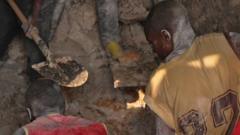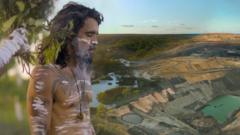A recent study indicates that humans have visually mapped only about 1,470 square miles of the deep seafloor, highlighting the need for further exploration to understand ocean ecosystems and the impacts of climate change better.
Vast Depths of the Ocean Remain Unexplored, New Research Reveals

Vast Depths of the Ocean Remain Unexplored, New Research Reveals
Over 99.99% of the deep seafloor remains uncharted as researchers urge for more exploration before industrial mining begins.
Humans have visually documented merely 1,470 square miles of the deep seafloor, which is a minuscule 0.001 percent of the entire ocean floor, according to groundbreaking research unveiled on Wednesday in the journal Science Advances. This area, slightly larger than Rhode Island, emphasizes the sheer scale of uncharted territory beneath the waves.
The study arrives amid global discussions around the potential industrial mining of the seabed for vital minerals. Scholars advocate that the limited understanding of deep-sea environments necessitates more comprehensive exploration before engaging in extractive practices. Katy Croff Bell, a marine biologist and the study’s lead author, emphasized, “More information is always beneficial, so we can make more informed and better decisions.”
Bell, who is also the founder of the Ocean Discovery League, underscored the urgency of learning about the deep sea for understanding the impacts of climate change and human activities on our oceans. Moreover, she remarked on the adventurous spirit that drives marine scientists visiting the unexplored marine depths, stating, "You can just imagine what’s in the rest of the 99.999 percent."
Visual documentation efforts of the deep sea began with U.S. Navy submersibles like the Trieste in 1958 and Alvin in 1960, which allowed biologists to identify new organisms and study their interactions within their ecosystems. The ongoing quest for knowledge in the deep sea not only aims to shed light on ecological relationships but also how to responsibly approach potential mining operations in the future.




















